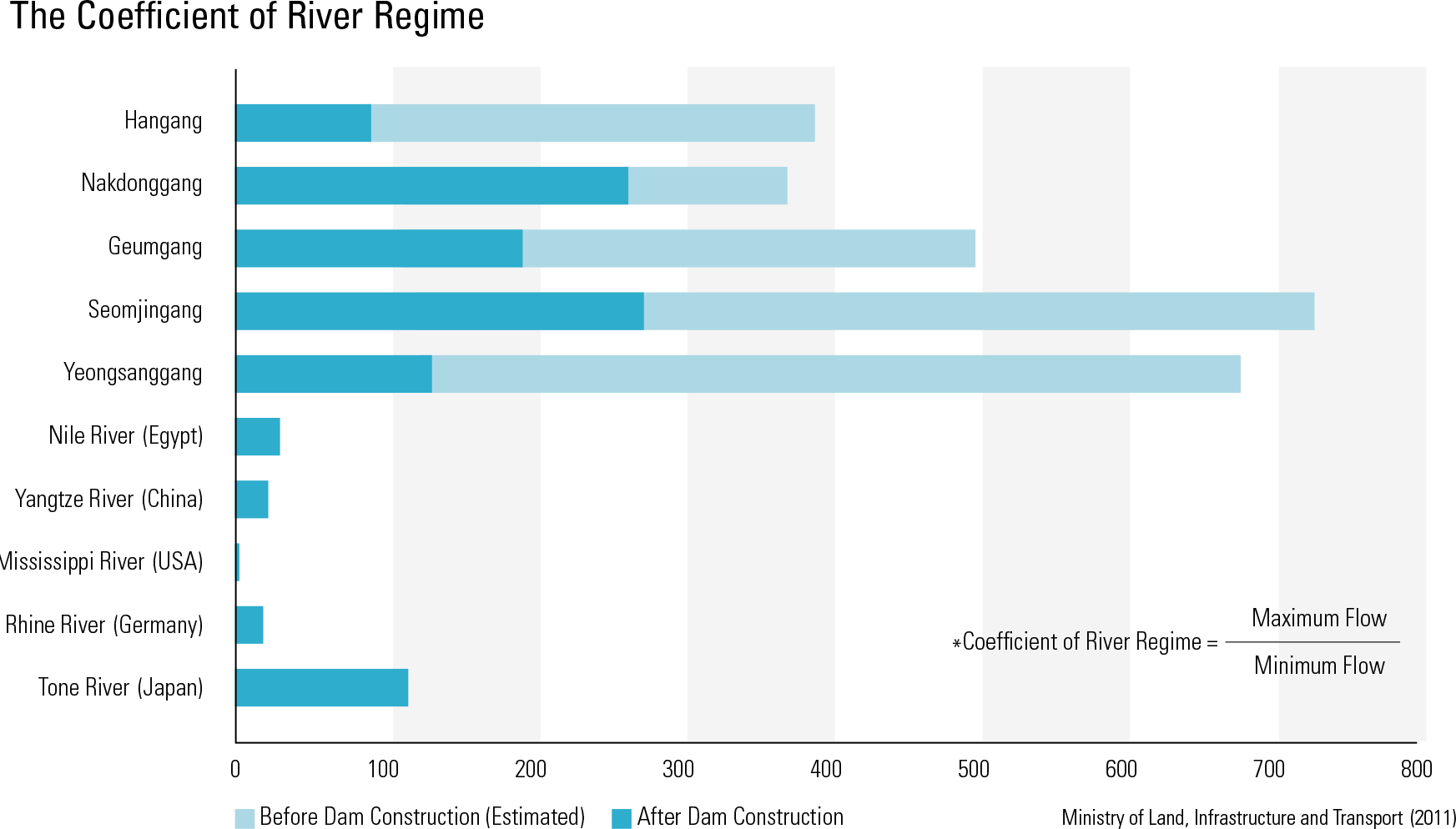English II
The terrain of Korea is characteristically high along the east coast and low along the west coast. Consequently, most of the rivers ow into the Yel- low Sea and the South Sea. The shoreline of the east coast is monotonous and rivers owing into the East Sea are relatively short and steep-sloped. On the other hand, the shoreline of the west coast is more complex and many rivers owing to the western and southern coasts are relatively long; they have gentle slopes and wider basins that result in higher flows. In these areas, river sedi- ments shape extensive alluvial plains and alluvial basins, and meandering channels are often formed as well. In Korea, there are ve large rivers: Hangang, Nakdonggang, Geumgang, Seomjingang, and Yeongsangang. Several mid to small-scale rivers are also found in the country, including Anseong- chun, Sapgyochun, Mangyeonggang, Dongjin- gang, and Hyeongsangang. In order to systemati- cally manage river and water resources, the rivers have been divided into 117 sub-basins. Hangang has the largest drainage area of 35,770 km2 (in- cluding the portion in North Korea). It also has an annual runoff volume of 16 billion m3, which constitutes 35.1% of the nation’s total runoff vol- ume. The longest river in Korea is Nakdonggang, with a length of 510 km. From 2005 to 2014, the average annual precip- itation in Korea was approximately 1,323.7 mm, which is equivalent to about 1.6 times the world average. This is enough to classify Korea as a high rainfall region, although seasonal variability is extremely high. Due to seasonal rain and ty- phoons, 735.8 mm of rainfall (55.6% of the annu- al rainfall) is concentrated during the summer and often causes oods. Furthermore, rainfall has the tendency to quickly collect in the rivers as over 70% of the land is mountainous with an average slope of about 20%. These geomorphological and climatic characteristics cause high uctuations in the ow rate of rivers throughout the year, often causing extensive oods and severe droughts. The coef cient of river regime indicates the ra- tio between the maximum and minimum ow of a river. Seomjingang currently has a coef cient of river regime of 270, which is the highest among the five large rivers of Korea, and nine times higher than the Nile River in Africa (coef cient of river regime: 30). Before the installation of dams, each of the five large rivers had coefficients of river regime that were higher than 300. In partic- ular, Seomjingang and Yeongsangang displayed extremely high levels at around 700. Consequent- ly, dams and reservoirs were actively constructed to ensure the reliability of water resources, reduce ood damage, and mitigate the effects of drought. Intensive plans were also implemented to con- serve river banks and their surrounding areas.
page_2 |
